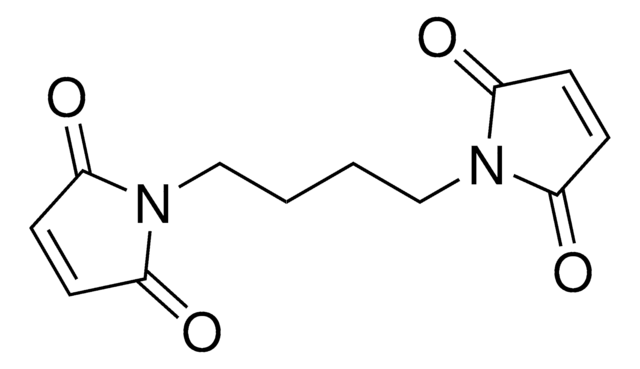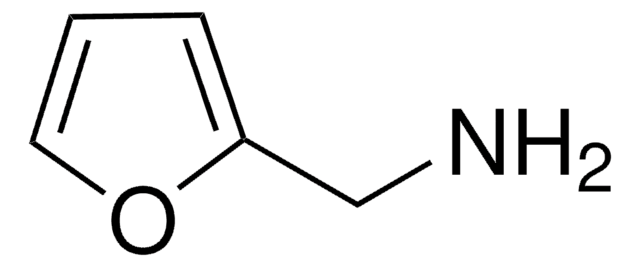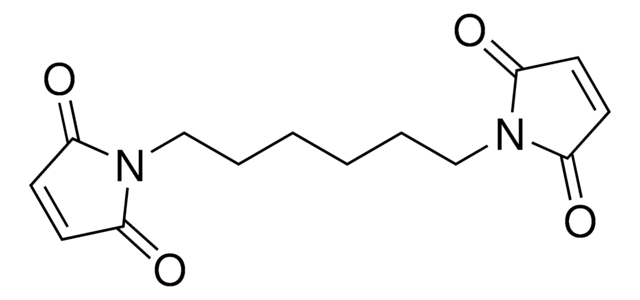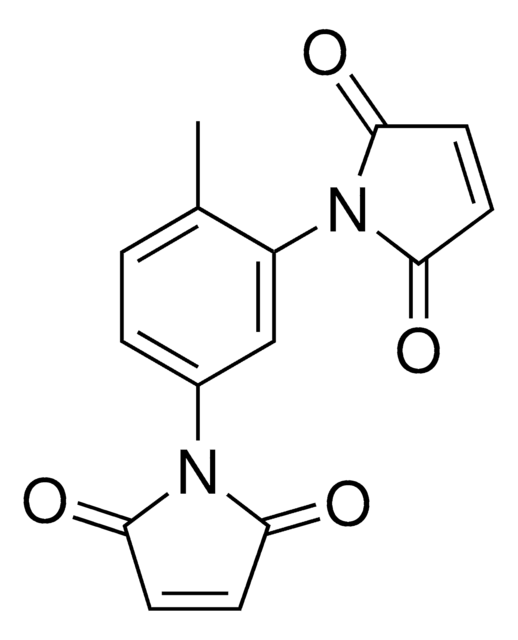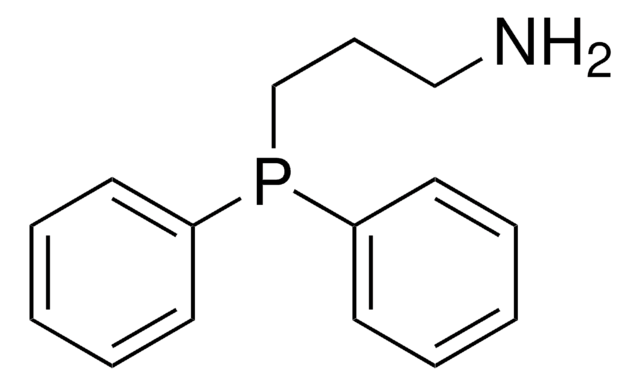803561
BMOE (bis-maleimidoethane)
Synonyme(s) :
1,1′-ethane-1,2-diylbis(1H-pyrrole-2,5-dione), N,N′-Ethylenebismaleimide, BMOE, Ethylenebismaleimide
About This Item
Produits recommandés
Forme
powder
Poids mol.
220.18
Pertinence de la réaction
reagent type: cross-linking reagent
Conditions de stockage
desiccated
Solubilité
DMSO or DMF: soluble
Conditions d'expédition
ambient
Température de stockage
2-8°C
Chaîne SMILES
O=C(C=CC1=O)N1CCN2C(C=CC2=O)=O
InChI
1S/C10H8N2O4/c13-7-1-2-8(14)11(7)5-6-12-9(15)3-4-10(12)16/h1-4H,5-6H2
Clé InChI
PUKLCKVOVCZYKF-UHFFFAOYSA-N
Description générale
Caractéristiques et avantages
- Reactive groups: maleimide (both ends)
- Reactive towards: sulfhydryl groups
- Short (8.0Å), sulfhydryl-to-sulfhydryl crosslinker, composed of maleimide groups and 7-atom spacer arm
- Shortest bismaleimide crosslinker available for close proximity crosslinking
- Water-insoluble—dissolve first in DMF or DMSO, then add to aqueous reaction buffers
- Noncleavable
Attention
Code de la classe de stockage
11 - Combustible Solids
Classe de danger pour l'eau (WGK)
WGK 3
Point d'éclair (°F)
Not applicable
Point d'éclair (°C)
Not applicable
Certificats d'analyse (COA)
Recherchez un Certificats d'analyse (COA) en saisissant le numéro de lot du produit. Les numéros de lot figurent sur l'étiquette du produit après les mots "Lot" ou "Batch".
Déjà en possession de ce produit ?
Retrouvez la documentation relative aux produits que vous avez récemment achetés dans la Bibliothèque de documents.
Les clients ont également consulté
Notre équipe de scientifiques dispose d'une expérience dans tous les secteurs de la recherche, notamment en sciences de la vie, science des matériaux, synthèse chimique, chromatographie, analyse et dans de nombreux autres domaines..
Contacter notre Service technique
